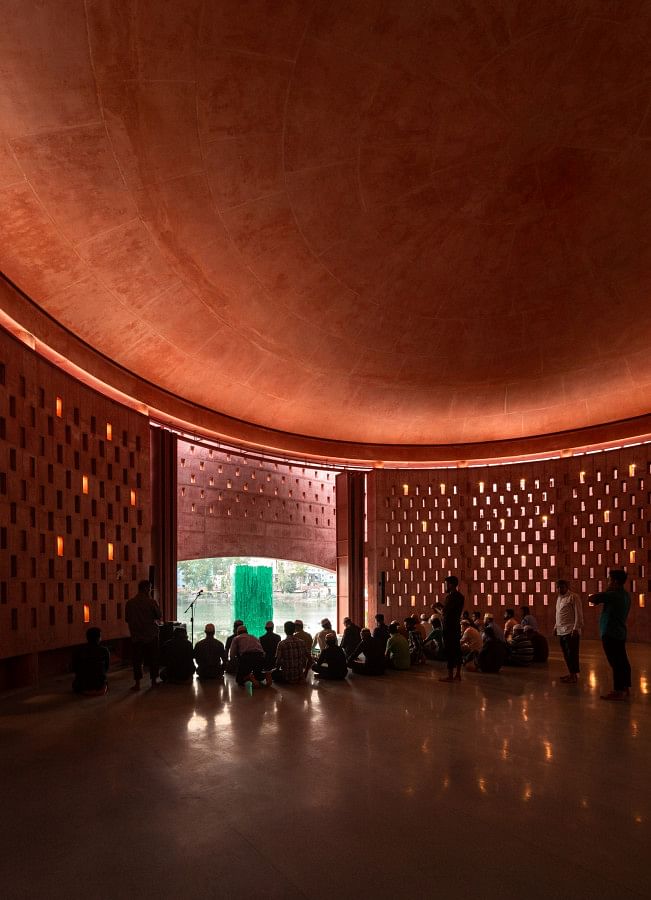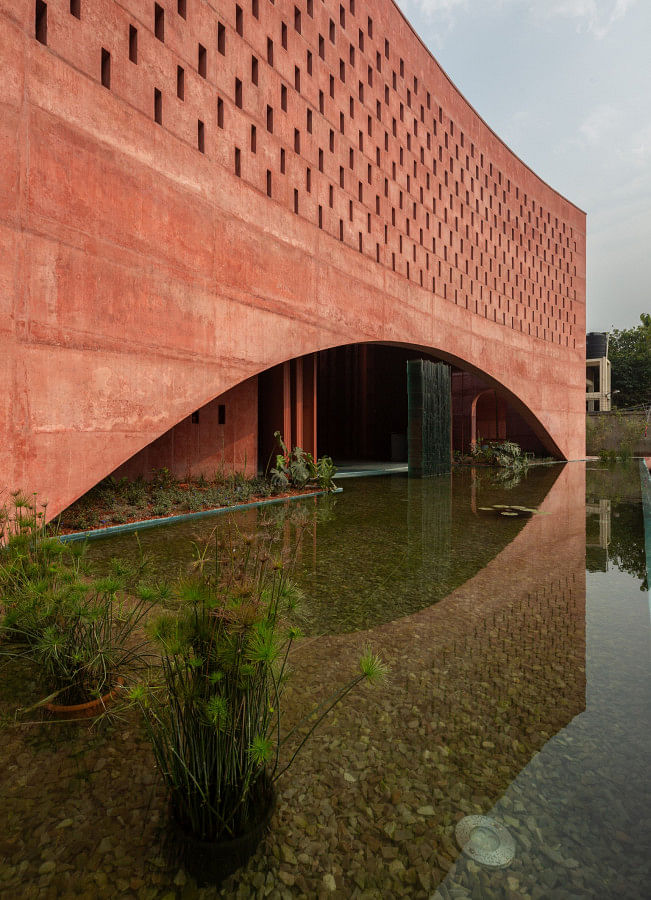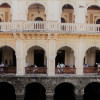Amidst the burgeoning industrial outskirts of Dhaka, at Jamgora in Ashulia, stands the Zebun Nessa Mosque – a synthesis of architectural innovation and spiritual tranquillity. Made in a monolithic form, the structure of the mosque has been designed as a "breathing pavilion," harnessing the natural elements of light and air to create a sanctuary that is both a retreat and a reflection of the divine. One cannot help gasping at this architectural marvel, designed by Saiqa Iqbal Meghna, who has worked tirelessly to bring her vision to life.
Graduating from Bangladesh University of Engineering and Technology (BUET) and further honing her skills with a master's from the Institute of Advanced Architecture of Catalonia, Spain, along with attending the Glenn Murcutt International Master Class on a scholarship, Meghna's academic background is as diverse as it is profound. Her recent project, the Zebun Nessa Mosque, within an industrial area in Ashulia, is constructed based on her architectural philosophy.

Meghna reveals her primary inspiration for the mosque's design was rooted in creating a space that harmonises with its surroundings – driven by a quote from Kahlil Gibran: "You pray in your distress and in your need; would that you might pray also in the fullness of your joy and in your days of abundance."
The mosque envisioned as a "permeable pavilion," aims to bridge the gap between land and water, serving as both a spiritual and breathing space. She elaborates on the project's inception, "The owner of the industrial compound wanted to build a mosque for the workers to commemorate the memory of his late mother in the hope of inducing softness within the harsh industrial area. This narrative transforms the mosque into a spiritual-social space, enhancing mutual care and trust between owner and the workers."
Meghna's approach to this project was to infuse the design with elements that facilitate natural light and ventilation. She explains, "The mosque features a simple yet effective design, with a monolithic mass situated on a high plinth, reminiscent of the vernacular structures built on "bhiti" (mound). The thick concrete walls are perforated with small rectangular voids. Filtered light seeping through voids resembles hanging lanterns of old mosques."

This design not only respects the industrial compound's aesthetic but also introduces a place of tranquillity and reflection for the workers. Sustainability, a significant concern in Meghna's practice, is intricately woven into the mosque's design.
"My practice intends to describe the latent potential of the deltaic city through transforming the in-between leftover places into ecologically sustainable public places," she states. The mosque's architecture promotes natural ventilation and employs recycled water for the gardens – embodying her vision for a space that respects and enhances its natural surroundings.
Balancing traditional elements with modern architectural practices is a theme Meghna navigates with care and consideration. "I think there should be no conflict between traditional and modern design elements in a project if it serves to fulfil the purpose of the architecture," she remarks, highlighting the mosque's dome as a symbolic and functional element that bridges historical and contemporary design philosophies.
Community engagement played a crucial role in the design process, reflecting Meghna's belief in architecture as a medium for social and spiritual cohesion. "The idea of the mosque to be a gathering/meeting/breathing space for the workers of the industrial community influenced the project to be a semi-open pavilion form, integrating plants and water," she explains.
Reflecting on the project, Meghna acknowledges the challenges and rewards of her architectural journey. The delay due to the COVID-19 pandemic and the challenges of working within an active industrial compound were significant hurdles that her team overcame through dedication and collaboration.
"The rigorous effort of the construction team and structural consultants combined with wholehearted support and coordination from the client made the work possible," she gratefully acknowledges.

As Meghna reflects on the journey of creating the mosque, she contemplates the broader implications of her work and the role of architecture in shaping a better world. "Religious beliefs or, I would rather use the word spirituality provide the most essential shelter, a stillness, a humble pause in a world full of chaos," she says.
Her approach to this mosque, integrating sustainable practices, engaging the community, and balancing the modern with the traditional, showcases her commitment to architecture that serves people, respects nature, and enriches the spirit. Meghna's work on the mosque not only offers a serene oasis for the workers of Ashulia but also stands as an inspiring example of how architecture can foster a sense of belonging, care, and spiritual well-being in even the most unexpected places.








Comments